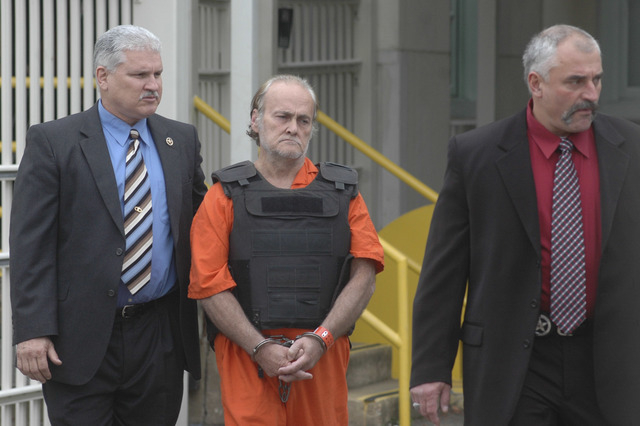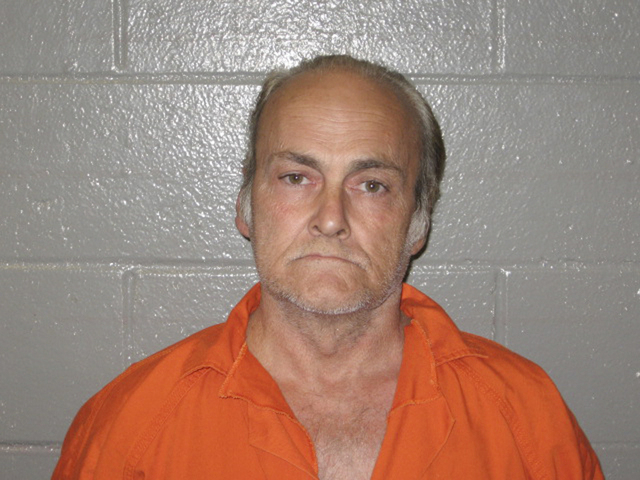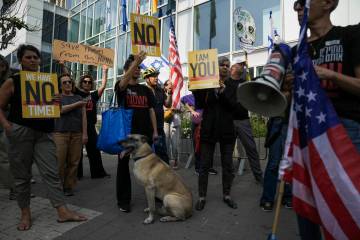Man admits 2010 killings of Vegas woman and young daughter
ALEXANDRIA, La. — The lawyer for a man declared dead two decades ago, only to resurface as the suspect in the 2010 murder of a Las Vegas woman and her daughter, does not deny that her client killed the two but said Wednesday that he’s being tried in the wrong court.
In opening statements, attorney Cristie Gibbens said it was improper to charge Thomas Steven Sanders in federal court for the 2010 slaying of 12-year-old Lexis Roberts. She said prosecutors lack evidence to prove that Sanders committed a federal crime, rather than a crime that should be addressed in local courts.
Otherwise, she said, “We agree with the government on almost all of the facts.”
Gibbens said Sanders “accepts full responsibility for the death of Lexis Roberts.”
Sanders, also known by the moniker “Spider,” is accused of killing Lexis and her mother, Suellen Roberts, after a Labor Day weekend trip to Bearizona Drive-Thru Wildlife Park in Arizona in 2010 turned into the family’s worst nightmare.
Prosecutor Bill Flanagan said Sanders shot Suellen Roberts, then drove Lexis to Louisiana, where he shot her four times and cut her throat.
The girl’s skeletal remains were found off a gravel trail in rural Catahoula Parish, Louisiana, in October 2010, a month after authorities say Sanders dumped her body. He was arrested after a month-long nationwide manhunt.
Sanders directed authorities to Suellen Roberts’ body in Arizona.
Gibbens, who offered no explanation for the shootings called it “a vacation that went terribly, horribly, sadly wrong.”
Sanders was identified as a suspect long after he was thought dead. Sanders had left his family in Mississippi in 1987, and his relatives and ex-wife had him declared dead in 1994 after he had been missing for years.
A middle-aged, balding man, Sanders sat quietly with his lawyers as the killings were described, periodically wiping his eyes. Dressed in a blue shirt and khakis, he wasn’t handcuffed, but U.S. marshals sat nearby.
Sanders is charged with two crimes: kidnapping resulting in death and using a firearm in a crime of violence that caused a person’s death. Prosecutors are seeking the death penalty.
After opening statements Wednesday, witnesses described finding Lexis Roberts’ remains on hunting property.
Photos of a skull with small pink braces still attached to the upper teeth were shown in court, along with a purple unicorn stuffed animal found in the woods near Roberts’ bones.
Flanagan said Sanders met Suellen Roberts while working and living at a storage facility in Las Vegas. Within a few months, they started dating and planned the Labor Day weekend trip that would end with both mother and daughter shot and killed, the prosecutor said.
After visiting Bearizona and the Grand Canyon, the trio pulled into a remote stretch of desert off an interstate so Suellen Roberts could shoot Sanders’ .22-caliber rifle, Flanagan said. Instead, Sanders shot the mother in the head while her daughter sat on a blanket nearby, Flanagan said.
Sanders left the body where it fell and drove the girl over several days to northeast Louisiana, where he shot her three times in the head and once in the chest, the prosecutor said.
“Lexis Roberts still had not died, and so he took his knife and he cut her throat,” Flanagan told jurors.
FBI agent Glen Kelly said Sanders confessed to the child’s death after his arrest in Gulfport, Mississippi, while still in possession of Suellen Roberts’ car.
“He said something to the effect of, ‘I’m surprised it took you so long to find me,’” Kelly testified.
Gibbens said Sanders was in love with the mother. She said he acknowledged, “I just shot her. I didn’t know what to do after that.”
Gibbens said that after learning how Lexis Roberts’ body had decomposed in the woods, Sanders replied: “She didn’t deserve that.”





























